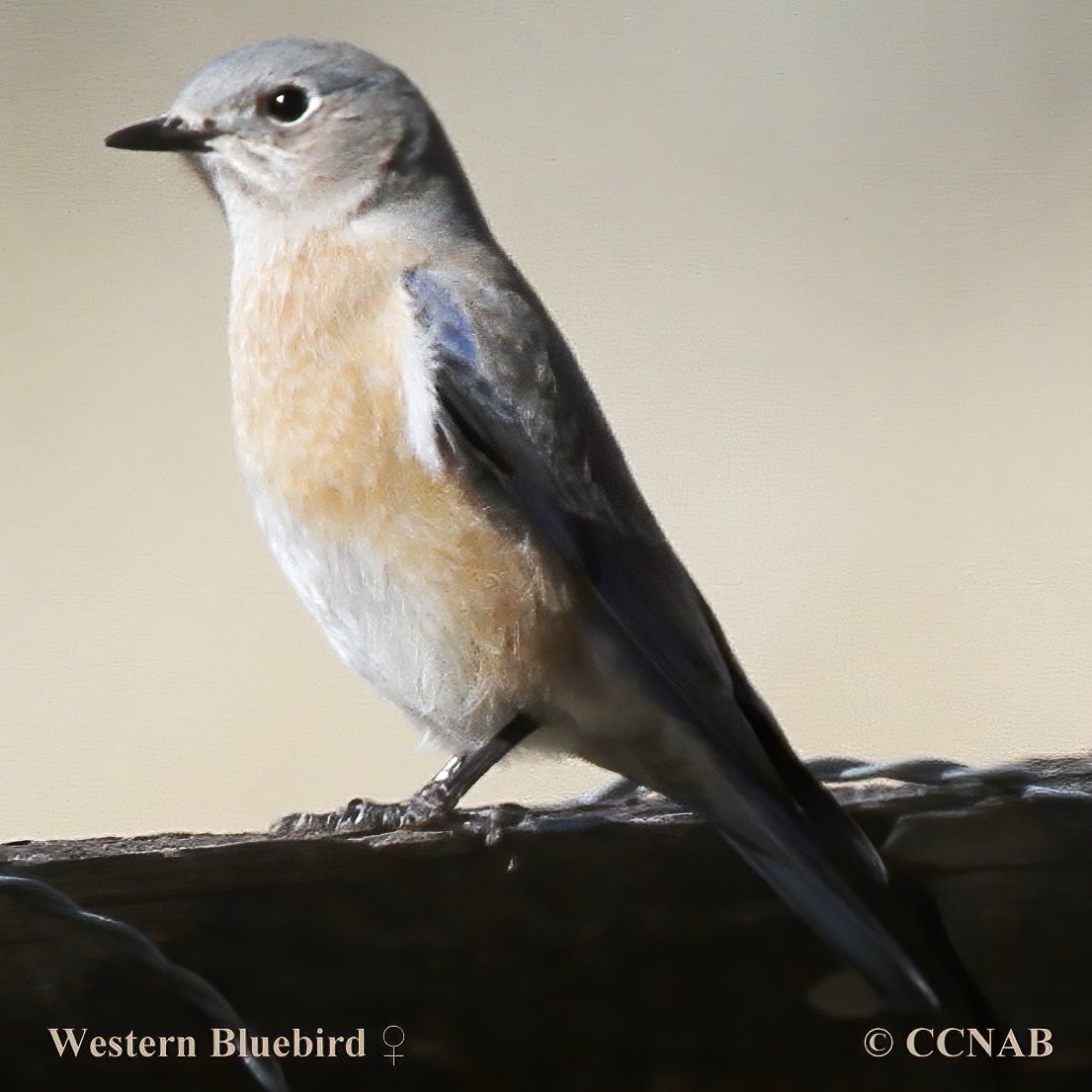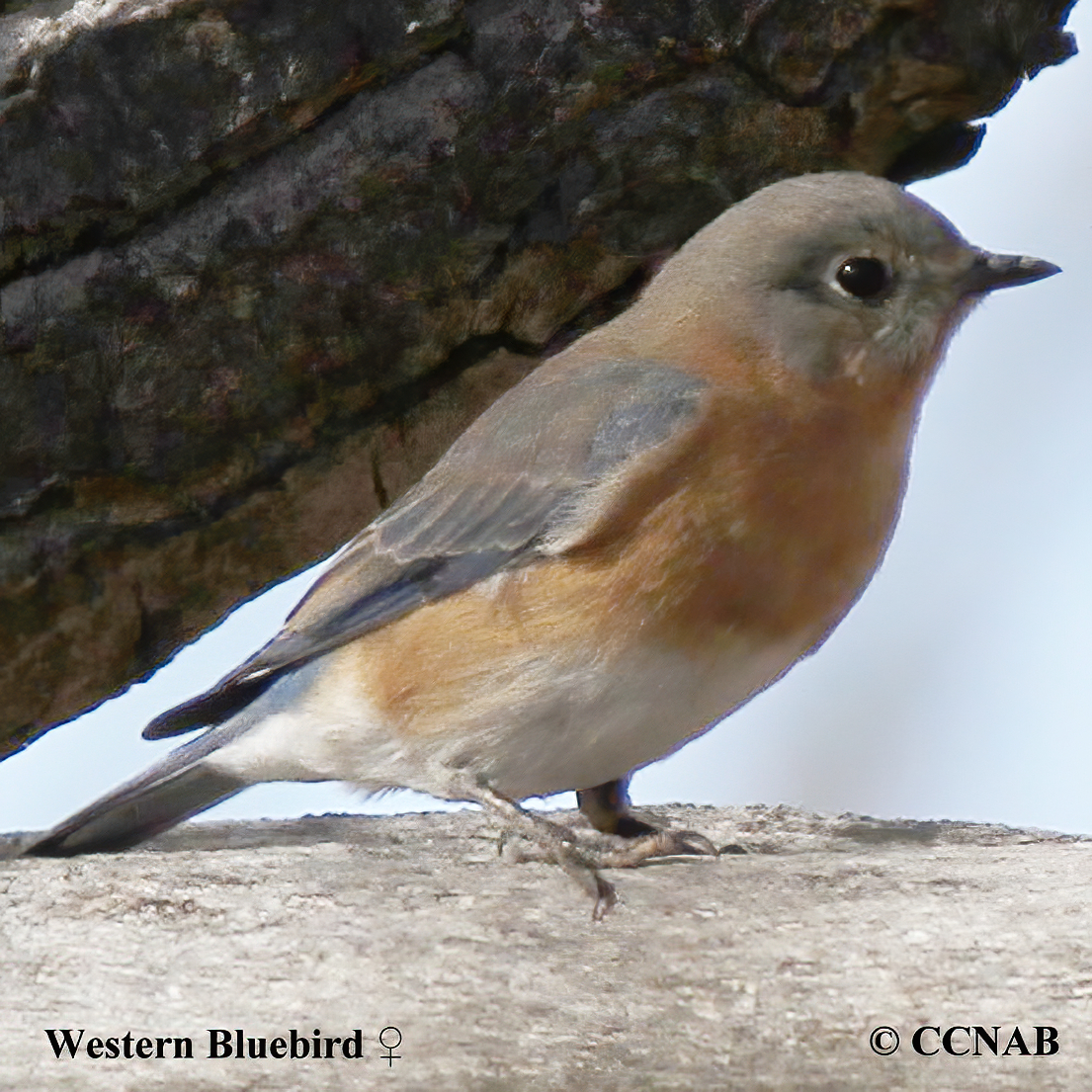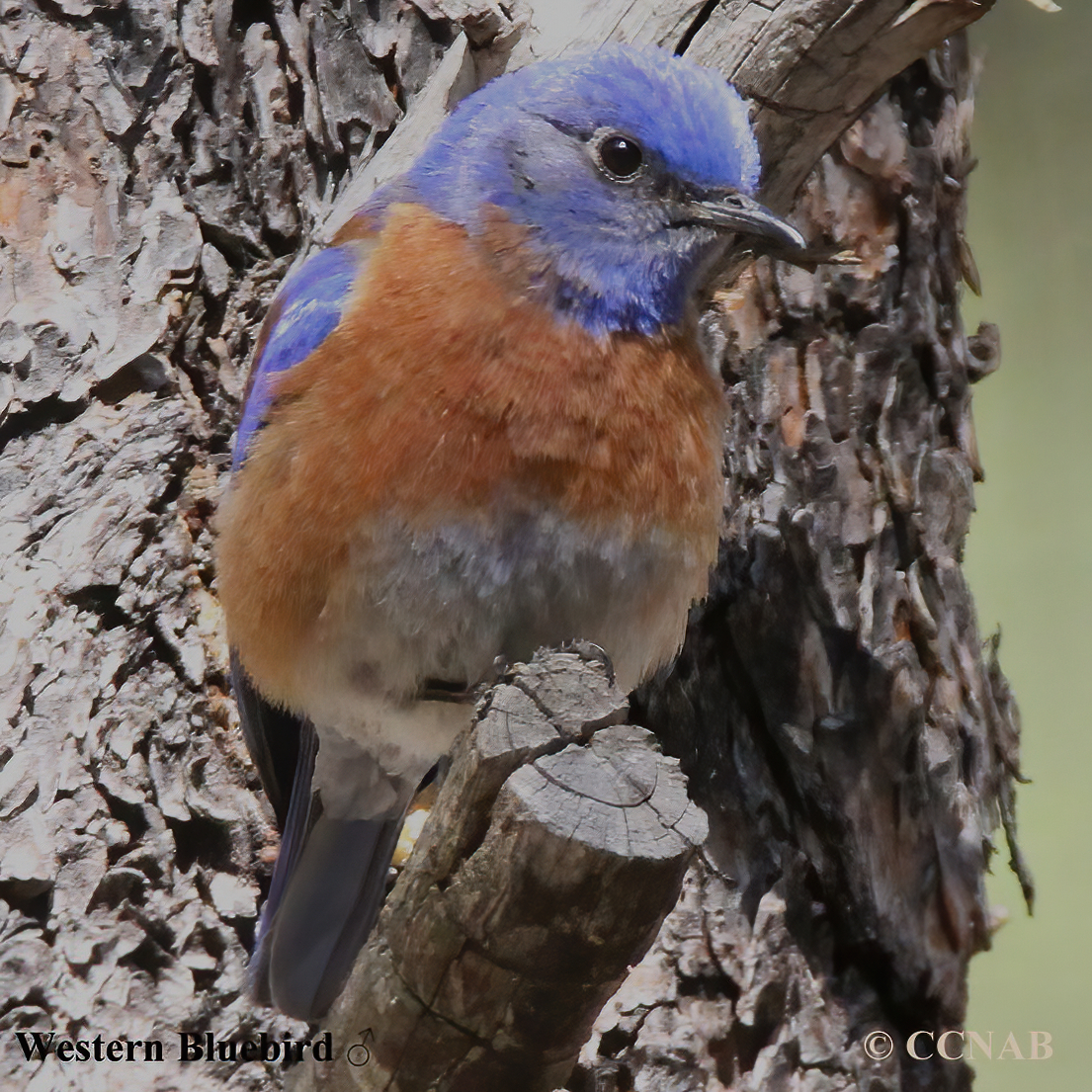North American Bird Search Box
This search box can be used to find bird species using bird's english, french or latin name, or to identify bird by its 4 letter Alpha Code
Field Guide for all the Birds of North America
Western Bluebird
4 Letter (english names) Alpha Code: WEBL (1)
Merlebleu de l'Ouest
Sialia mexicana
Information, images and range maps on over 1,000 birds of North America, including sub-species, vagrants, introduced birds and possibilities
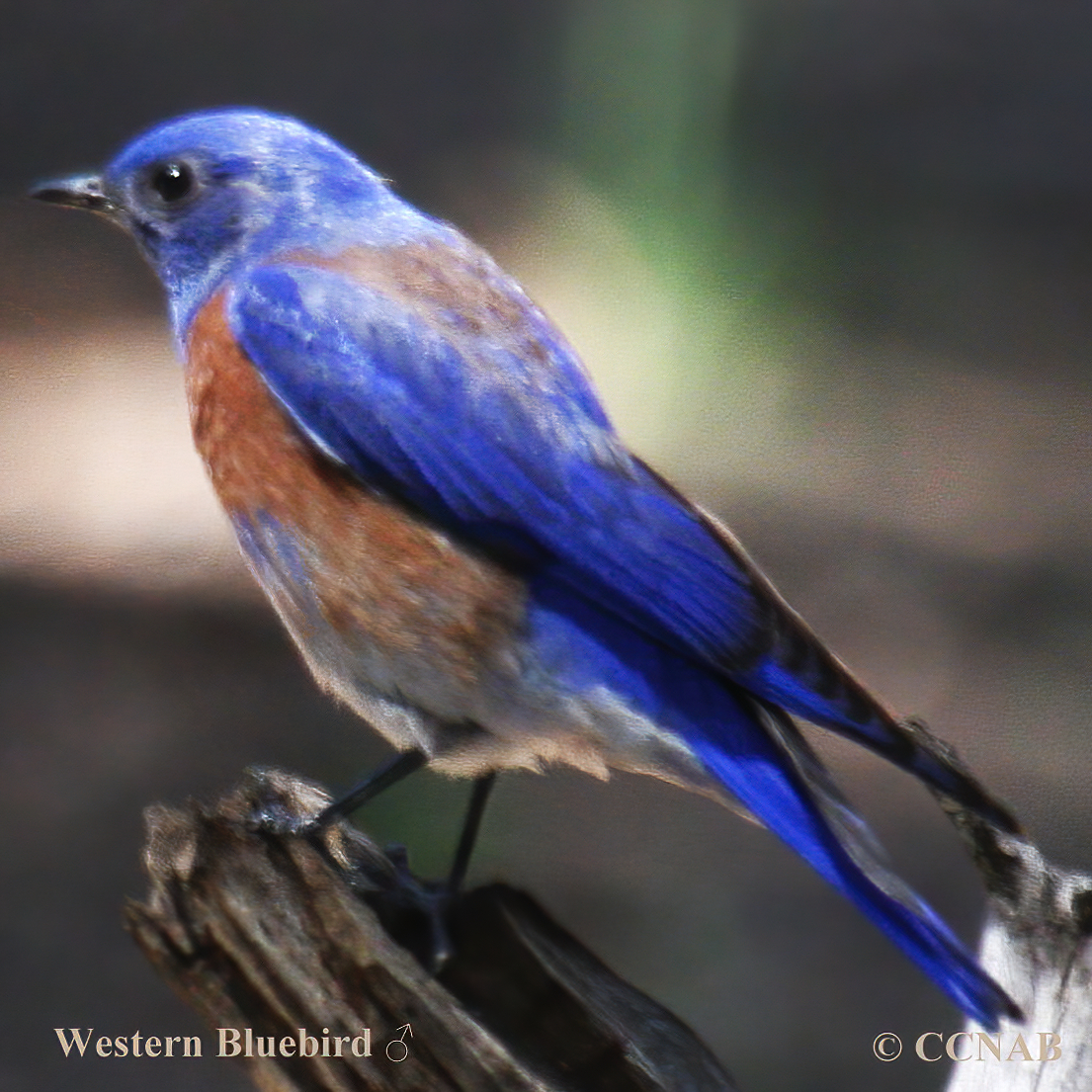
Species: The Western Bluebird (Sialia mexicana) prefers a warmer habitat than the other bluebird species. It is seen west of the Rocky Mountains and south into the Sierra Mountains. Similar to other types of bluebirds, there is a noticeable decline in their numbers. The suspected reason for this is the loss of old growth trees with cavities and competition to other cavities nesting birds. Nesting boxes have helped with their numbers.
Distinctions: The male has a dark blue back, head, wings and tail, with a rusty red breast, flanks and shoulder stripes with an off white belly. The female has similar colours except with a greyer tone. The juvenile, similar to the juvenile of the Eastern Bluebird, has a browner body with white spots, blue wings and tail feathers.
Voice: Similar to other bluebirds, a low warbling song, separate calls notes in flight, quiet on most occasions.
Nesting: Three to six pale blue eggs, two broods per year. These birds nest in tree cavities, holes in fence post and bird houses. Prefers sparsely treed fields, meadows and open forests. Usually, it perches on a lower limb of a tree or fence post, where it is able to pounce on unsuspecting insects or grubs on the ground.
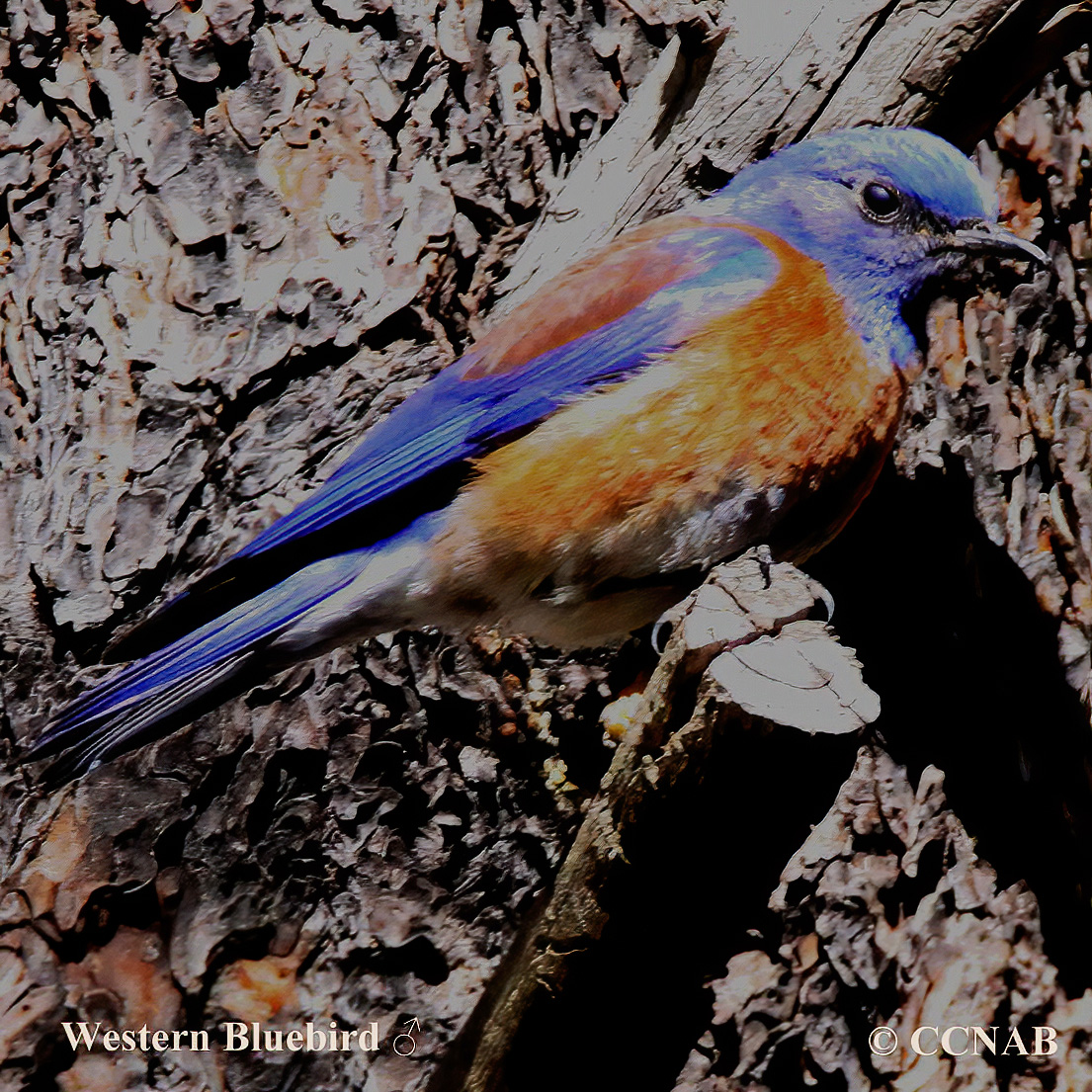
Life, Habitat & Pictures of North American Bluebirds
| B L | W W | W | Family | Latin Name |
|---|---|---|---|---|
| 7" 17.8cm | 13.5" 34.3cm | 1.0 oz 28.3g | Turdidae | Sialia mexicana |
North American Birds Videos
- Click here
- Click here
North American Birds Calls
- Click here
- Click here
- Click here
- Summer
- Year Around
- Winter
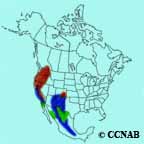
Distribution: Seen in the warmer regions of Southern British Columbia. South through mostly the Pacific coast States into California, east of the Sierra Mountain Range, to Colorado, and south into Western Texas. Is a member of the thrush family, and a common bluebird seen in Mexico.
Reference to Other Bird Site:
ABA - American Birding Association This site represents an organization that maintains official records of all birds species that have been proven to have been seen inside the perimeters of the North American Continent and the surrounding bodies of water. Regular revised versions are posted to keep the bird list current at all times. This is the list used by all serious birders over their lifetime. You may be aware of the movie called the "Big Year". It was with this list that all the competing birders used in an attempt to set a new record as to how many bird species that could be seen by an individual birder in one calendar year.
